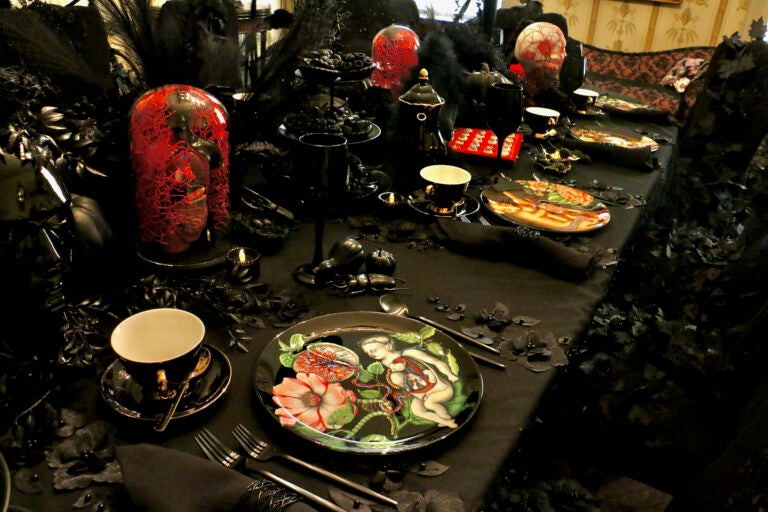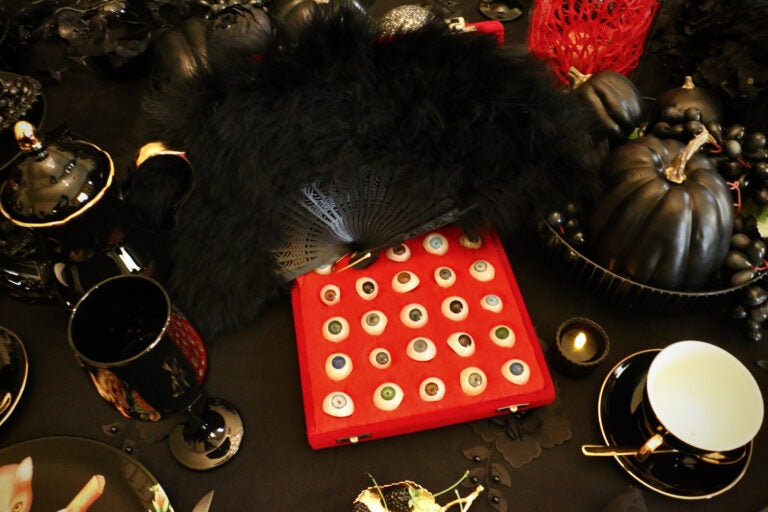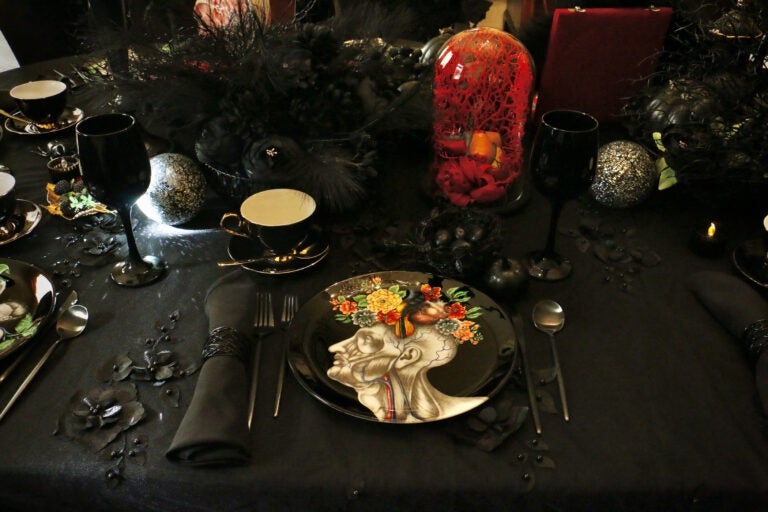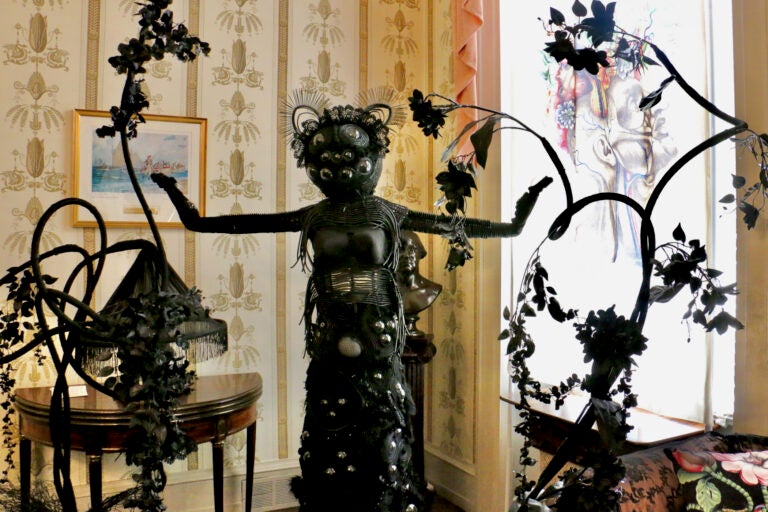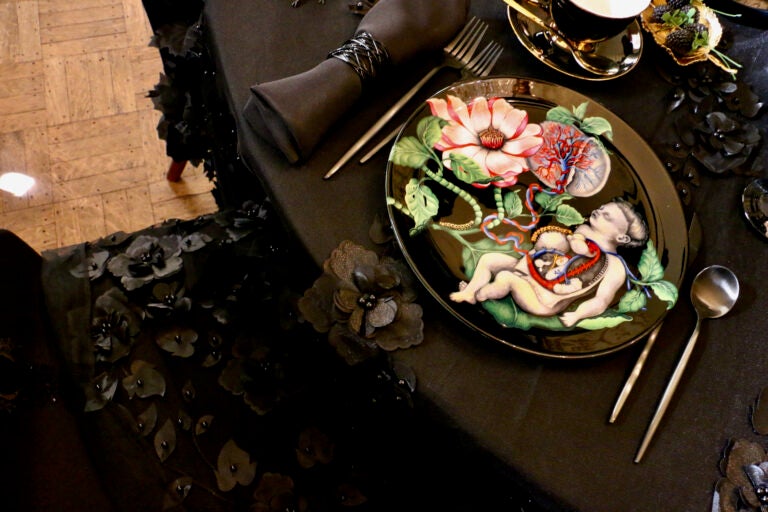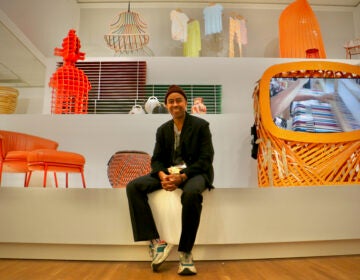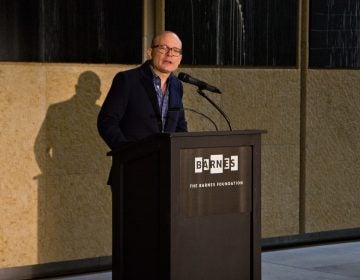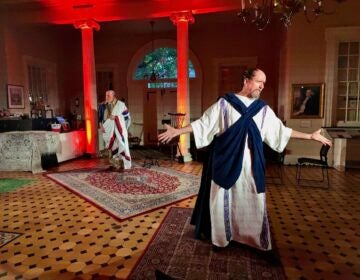Paint it, black: A dark dinner party tableau at Philly’s historic Hill-Physick House
Artist Heather Ujiie has created a morbid Victorian tableau “Dark Forest” inside the 19th-century home of the father of modern surgery.
Listen 1:17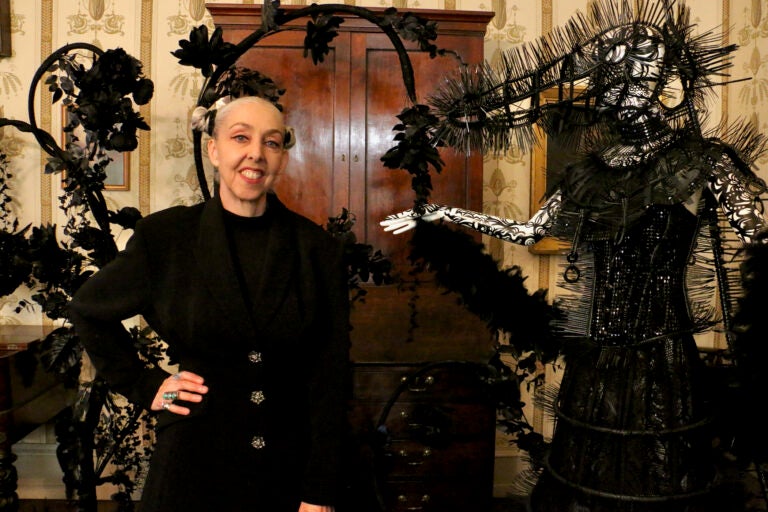
Heather Ujiie stands beside a denizen of her "Dark Forest" installation at the historic Physick house. The figure suggests both woman and animal, with its hoop skirt and corset giving it a Victorian vibe. (Emma Lee/WHYY)
From Philly and the Pa. suburbs to South Jersey and Delaware, what would you like WHYY News to cover? Let us know!
Visitors to the historic Hill-Physick House museum in Philadelphia’s Society Hill can glide through the parlor of one of the oldest Federalist-style houses in the city, climb the curving staircase built in 1786, and pass the room where Dr. Philip Physick innovated surgical instruments that changed 19th-century medicine.
Then, turn a corner into a morbid fantasia: A black dinner party that might have appeared to Wednesday Addams during a fever dream.
“Dark Forest,” by Philadelphia artist Heather Ujiie, is an imaginative tableau where everything is black — the lace tablecloth, the chair covers, the dishware, the cutlery, the feathered centerpiece, and even the food. Ujiie painted a tower of pastries black, along with a bowl of fruit.
“This magnificent centerpiece draws you in, but that’s also a little bit grotesque,” she said, pointing to her table setting. “You see, there, glass eyeballs from the 19th century. Body parts are illustrated on the plates.”
Ujiie printed anatomical diagrams on the black plateware, as well as the curtains where a human head explodes with flowers. Under bell jars are models of internal organs.
Surrounding the table is a forest of surreal foliage as the walls seem to be crawling up the patterned wallpaper.
“Like a Mad Hatter tea party, but with a twist,” she said.
The Philadelphia Society for the Preservation of Landmarks, which operates the historic house, partnered with the arts-presenting organization Past Present Projects to commission Ujiie to make “Dark Forest,” an imaginative tableau overlaying the historic furniture and décor of a house frozen in its 19th-century incarnation.
Ujiie said “Dark Forest” has a story inside of it, but buried deep in its darkness. She cites literary influences like Edgar Allen Poe’s “The Mask of the Red Death,” the surreal dreaminess in Lewis Carrol’s “Alice’s Adventures in Wonderland,” and the funereal aesthetics of Joris-Karl Huysmans’ 1884 novel “Against Nature.”
“A lot of the literature of that time was very pivotal in terms of questioning what is sacred and what is not sacred,” said Ujiie. “What is the dark evil, and what is good?”
Ujiie, who teaches fashion and textile design at Moore College of Art and Design, lives in Manayunk and has a practice of taking a daily walk along the Cynwyd Heritage Trail. The three-mile loop passes West Laurel Hill Cemetery, where mortality is a constant reminder. Ujiie evokes those walks in “Dark Forest” by filling the room with the sound of chirping crickets.
“I wanted this piece to be otherworldly, and I was looking for some kind of soundtrack that felt like the evening, or moonlight, or a dark forest,” she said. “I wanted to transport my viewers into this magical experience.”
The Hill-Physick House rarely has artistic interventions. Kayla Anthony, executive director of the Society for the Preservation of Landmarks, can only remember Physick House used once before for an art installation. The house, outfitted with period antiques from the early 19th century, is sometimes used for music and theater performances, and rented for special events such as weddings.
“We have an exhibition, obviously, but it’s a permanent exhibition space. We don’t make a lot of changes,” Anthony said. “So it’s exciting to have the opportunity to blend contemporary art with these historical pieces and this historical architectural fabric.”
The room “Dark Forest” occupies was originally a bedroom, now used as a convening space for the Society of the Cincinnati, America’s oldest heritage society whose members are descended from officers of the Revolutionary War.
Anthony hasn’t told the Society what she did to their room.
“Most of them don’t live in town so they haven’t come by,” she said. “I wish they would come and see it.”
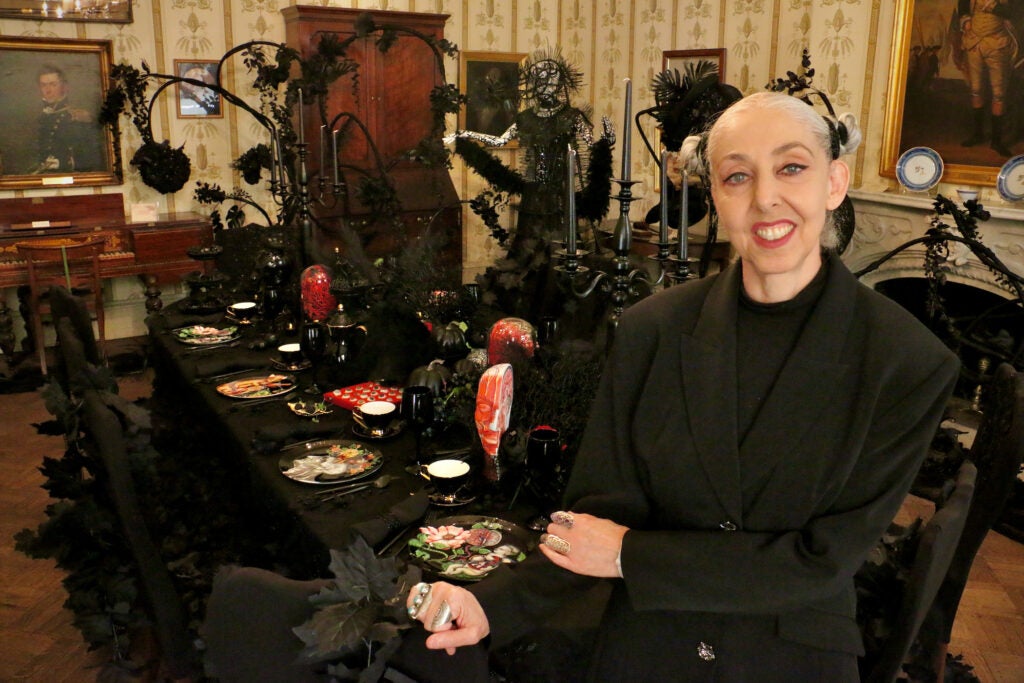
Ujiie’s installation inside the historic Federal house is anachronistic: it draws from a gothic Victorian sensibility with a contemporary interpretation – the hoop dresses over mannequins, for example, are made with aquarium pump tubing wrapped with hundreds of black zip ties.
Ujiie was inspired by Victorian funereal art and memento mori, or keepsakes to remember the dead such as jewelry fashioned from the hair of a loved one.
“This notion of something being deathly or grotesque, it can be celebratory and beautiful if you find a way to embrace that so it doesn’t repulse you,” she said. “It actually draws you in. I think a lot of people are afraid of what that is.”
This weekend will be the end-times for “Dark Forest.” After Sunday it will be taken down and the Society of the Cincinnati will get their room back. Ujiie will keep it intact with the intention of someday re-staging it, perhaps in a white-cube gallery.

Get daily updates from WHYY News!
WHYY is your source for fact-based, in-depth journalism and information. As a nonprofit organization, we rely on financial support from readers like you. Please give today.



